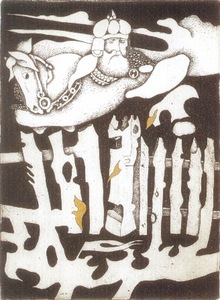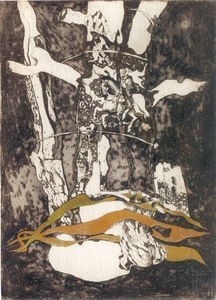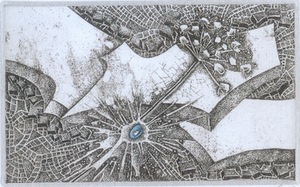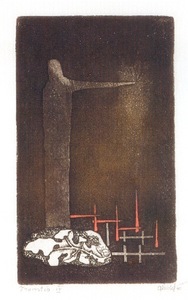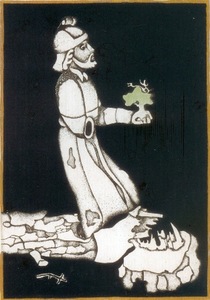VISUAL CHRONICLE OF LITHUANIAN HISTORY 0
In brief: ‘Why is it Didelytė’s and not ours?’ – the writer Kazys Saja asks in the brand-new album ‘Gražina Didelytė’s Lithuania’ (2011, Vilnius: Petro Ofsetas). The graphic artist left us five years ago but her works still radiate life and love to the native land. Nine chapters of the album include a very broad chronological scale and present G. Didelytė’s outlook at the development of Lithuanian history. The artist’s creative heritage becomes as if a visual chronicle in the album that records the main political, cultural changes and most influential historical figures. Forty years of her work are included in the album as well as a variety of topics and graphic techniques.
The publication is informative enough; chapters are started with texts that define G. Didelytė‘s artistic attitudes towards different historical periods and tell us about moments of her personal life. Illustrations of works are followed by lyrical and sensitive commentaries, some of them are written by the artist herself.
The album is started with the chapter ‘A Look at the Past Millions of Years Ago’ that presents the series of 12 works ‘Magic’ (1998-2006). The artist pays attention to cyclic transformations of nature here. Magic for Didelytė means a constant change of nature, when resin turns into amber, the whitest linen come from flax and ice melts into water. In the drawings thorough thin lines, soft tones and attention towards detail can be seen. The artist manages to contain the whole cosmos in a small format of 12,5 x 7,5 cm; formations of tiny details resemble of constellations. This space of images was created on a zinc plate with a simple sewing needle.
The drawing series ‘Time of the Balts’(1991) and ‘Kalevala’ (1992) are presented in the chapter ‘Several Millenniums Ago: At the Origins of the Baltic Culture’. The artist finds links between the Finnish epos and Lithuanian folklore in songs of witches, wails of the beloved and strength of tribes.
Being interested in the history of the state and its figures, G. Didelytė focused on aims of the individuals and their historic significance rather than portrayal precision. This tendency could be seen in the triptych ‘Kęstutis‘ or ‘Vision’ where she uses signs to express the resolution of the ruler. G. Didelytė also gave her tribute to women who left important traces in the Lithuanian history, such as Duchess Gražina, Queen Barbora Radvilaitė or the rebellion leader Emilija Pliaterytė.
The mood of resistance is felt in the chapter ‘From the Occupation of the 1940 to the Total Collapse of Sovietism’. Topics of deportation to Siberia, pain and nostalgia, isolation and oppression of Lithuania are dominant in the works presented here.
Book smuggling is a close topic for the soul of G. Didelytė. Having the speciality of book illustrator, the artist contributed a lot of her time for bookplates and books leaded her all her life. The topic of book smuggling during the prohibition of Lithuanian press is shown in the series ‘Light of Book’ (1993) and ‘Forbidden Light’ (2001).
The chapter ‘Nature and History of Dainava in the Collar of Art Images’ is characteristic of colours and expressivity. Didelytė‘s beloved region Dainava is embodied in melting glaciers and most famous personalities.
The album ‘Gražina Didelytė‘s Lithuania’ is a ray of love to the homeland that might warm and melt many hearts frozen by ice age. Works of Didelytė charm with the creative precision, mastery of etching and ability to see the beauty of a moment in every episode of nature and life.
